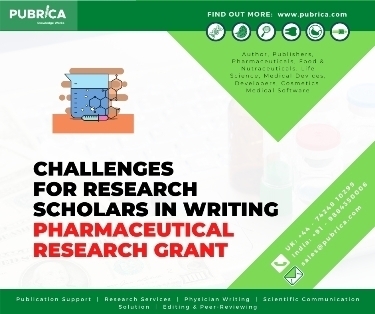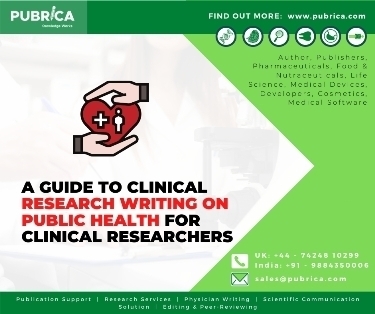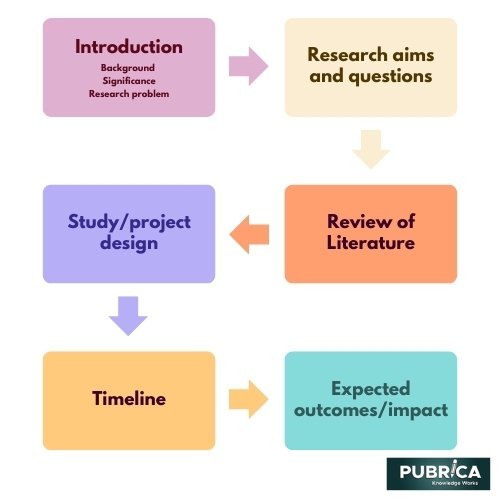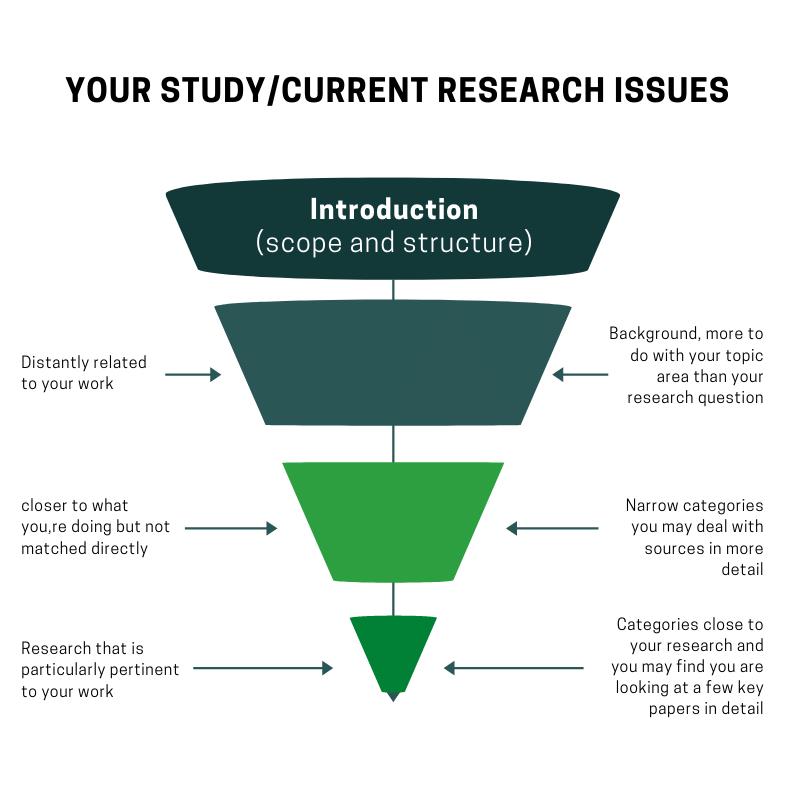
Challenges for research scholars in writing pharmaceutical research grant
July 18, 2020
A GUIDE TO CLINICAL RESEARCH WRITING ON PUBLIC HEALTH FOR CLINICAL RESEARCHERS
July 25, 2020Preparing a concrete research proposal is an integral step ofthe PhD application process in Biotechnology. A well-structured research proposal highlights the significance of the study, defines the research problem, outlines the methodologies, and discusses the implications of the possible outcomes.The process of preparing a research proposal involves critical thinking and excellent communication of ideas. The review committee at the university evaluates the potential of the candidates and the feasibility of the study based on the proposal.
Sections of a Research Proposal
The format, requirements,and guidelines for preparing a research proposal depend on the institute and one can obtain this information from the official sources. Broadly, a research proposal consists of the following sections:
- Introduction which encompasses the background of the study bringing out the significance, knowledge gaps, and the research problem statement
- Specific objectives of the study(can include development of new methodologies to advance the Biotechnology field)
- Review of literature associated with the research topic
- Approaches and design of methodologies to address the research questions
- Timelines, resources, budgets
- Expected outcomes, their implications, and how the study advances the field
- Citations
Apart from the scientific framework, parameters like timelines, resources, and budgets proposed for the project also decide the feasibility of conducting the research, and therefore must be realistic and attainable.An ideal research proposal will also be flexible in its execution. In addition, the applicant must keep in mind that the scope of the research project should preferably align with the ongoing work in the department.

Structure of a research proposal
Writing a research proposal poses several challenges and students sometime require guidance in translating their ideas to a solid proposal andassistancewhen faced with limited timeto develop the proposal.Using our research proposal writing services, students can collaborate with research proposal writers who provide help in writing and editing high quality proposals customised to their requirements. The hired research proposal writers are subject matter experts in the fields of Biotechnology, Medicine, and Life sciences with a PhD degreeand excellent scientific writing skills. Our research proposalservice provides high quality contentensuring plagiarism correction and guidance for developing all the sections of a proposal.
Background literature writing
In this section, we focus on how to effectively write background literature for a research proposal. Background literature is one of the foremost and important sections of a proposal that establishes the context of the research problem. A well-written background section will generateinterest about your research problem in the reader,who thereafter will be invested in the later sections of the proposal.
The background section in a proposal should cover the following points
- Introduce the research topic
- Historical or landmark developments in the field of research topic
- Progress and evolution of the field
- Current trends in the field
- Gaps in the existing knowledge, unmet needs, and missing links
- Developing and stating the research problem (problem statement)
- Justification of the need for the study
- Significance of the study and contribution to scientific knowledge
A key aspectof writing this section is the organisation of literature.To achieve this, one can adopt the funnel approach (Hofstee, 2006) by first covering the broader literature of the field and later tapering the focus to studies relevant to the specific topic of interest.The progress in the field should be presented in a logical and connected manner without deviating from the research topic of interest in Biotechnology. One can compare the different schools of thoughts and theories on the topic and discuss the advantages and limitations and put forth your point of view supported by evidence.

Importance of identifying research gaps
Reviewing relevant publications from the past 3-5 years will help determine the recent trends as well as understand the gaps in research from the limitations and future directions, as discussed by the authors. The identification of knowledge gaps in the field provides originality and innovation to the proposal. An in-depth understanding of the research topic enables the researcher to ascertain the importance of these knowledge gaps and convert them into significant research problems that required further investigation to advance the field. This provides a sound rationale for the study and later paves way for laying down the objectives of the study and designing methodologies to test the hypotheses. Often times in Biotechnology field, the prospective PhD student will be taking forward an existing project in the lab. In this context, the background literature will cover the latest findings from the laboratory and discuss the missing links and future directions to take it forward which will be addressed in the proposed study. This will also help in demonstrating expertise and experience in the field in your proposal which will work to your advantage.
The applicant should consider the following points while writing the background literature
- The background literature section should not be exhaustive and instead should discuss only relevant studies close to the research topic.
- One needs to critically review the literature and discuss the relevance of the findings, as opposed to plainly state the results of the studies by other research groups. This would highlight the critical thinking ability of the candidate which will be evaluated by the review committee.
In summary, a research proposal is the cornerstone for academic research, and the background literature section, in particular, documents how the research study advances the field and adds a paradigm to the existing scientific literature. A compelling research proposal with a well-researched background of the study can provide an edge to thePhD application and increase the chances of selection. We offer the best research proposal writing service (includes writing/editing/proofreading) that provide expert guidance in preparing a strong background literaturesection highlighting the recent trends and knowledge gaps which can definitely strengthen your Biotechnology research proposal.
References
- https://www.monash.edu/rlo/graduate-research-writing/write-the-thesis/writing-a-research-proposal
- https://canvas.hull.ac.uk/courses/779/pages/writing-the-review
- Libguides.usc.edu/writingguide/researchproposal
- https://www.biotecnika.org/2019/11/how-to-write-good-phd-proposal-phd-application/
- Sudheesh, K., Duggappa, D. R., &Nethra, S. S. (2016). How to write a research proposal? Indian J Anaesth, 60(9), 631-634. doi: 10.4103/0019-5049.190617
- Hofstee, E. (2006). Constructing a good dissertation: A practical guide to finishing a Masters, MBA or PhD on Schedule. Sandton: EPE
- https://orsp.umich.edu/research-proposals-background-or-significance



